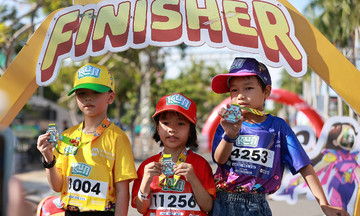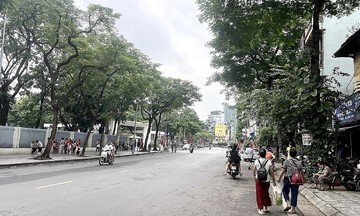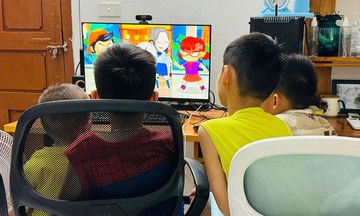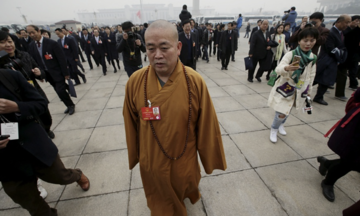After finding no unusual bulges or creases, her fingers traced the edges of the bag. Then, using a magnifying glass, she scrutinized the palladium hardware on the flap. The brand's logo might evolve, but the engraved characters must always be sharp, uniform, and perfectly spaced.
"This is one of the most important identifiers of a Birkin," she said.
Melissa then checked the stitching, looking for consistency and evenness. The 4 palladium feet on the bottom were also examined to ensure they matched the other hardware and were hammered in, not screwed.
Finally, the zipper—it had to be made by Hermes, with its signature H-shaped pull.
 |
Melissa B. checks a pair of Saint Laurent shoes for authenticity by smelling the leather. Photo: Julie Glassberg/Bloomberg Businessweek |
Melissa B. checks a pair of Saint Laurent shoes for authenticity by smelling the leather. Photo: Julie Glassberg/Bloomberg Businessweek
Melissa is one of dozens of authentication experts at Vestiaire Collective, a French luxury resale website based in Tourcoing. This is the first and largest of the company’s 5 global centers. Their mission: to detect increasingly sophisticated fakes, sometimes made with the same leather and metal accessories as the real thing from the same suppliers.
Melissa lifted the Birkin to her nose, closed her eyes, and inhaled deeply, savoring the scent of the tanned leather. "It has a slightly sweet smell," she noted. Lastly, she used a handheld UV light to check the box and examined the invoice and purchase certificate. "This one," she concluded, "is authentic." The entire process took 15 minutes.
The profession of counterfeit detection is becoming increasingly important as the secondhand luxury market booms. According to Bain & Co., sales in this market grew 7% to over $50 billion USD in 2024, exceeding the growth rate of the new luxury market. Vestiaire Collective’s revenue rose 20% last year. San Francisco-based competitor The RealReal also saw sales climb 9.3% to more than $600 million USD.
This fuels the demand for authentication. In 2021, less than one-third of the items were rejected by Vestiaire due to suspected counterfeiting. Today, that figure exceeds 50%. The real problem isn’t the cheap knockoffs typically found in markets, but “super fakes”—replicas nearly indistinguishable from the genuine articles.
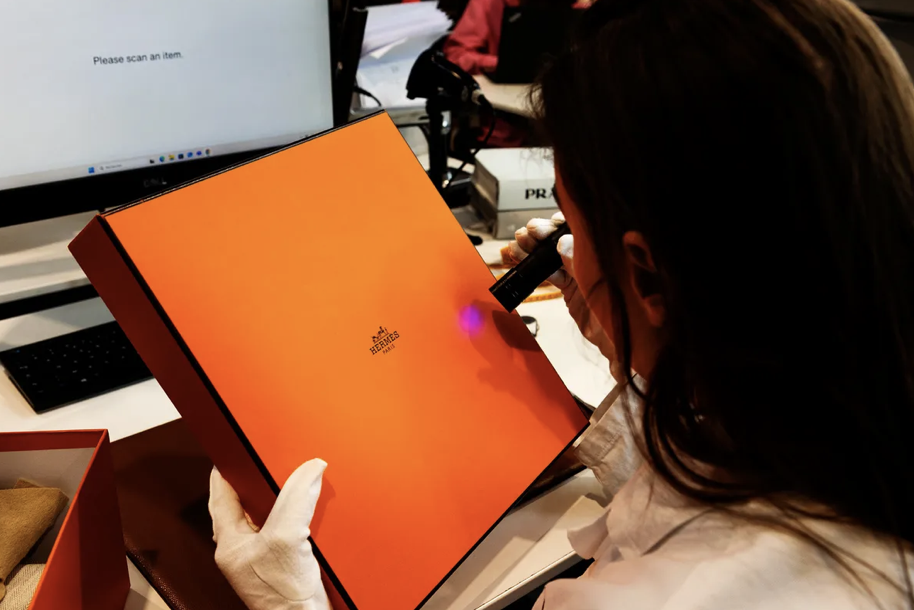 |
Scanning the box with a UV light to determine its authenticity. Photo: Julie Glassberg/Bloomberg Businessweek |
Scanning the box with a UV light to determine its authenticity. Photo: Julie Glassberg/Bloomberg Businessweek
The Organisation for Economic Co-operation and Development (OECD) says counterfeiting is a $467 billion USD industry worldwide. Last year, US Customs and Border Protection seized $4.2 billion USD worth of counterfeit luxury goods.
"That's just the tip of the iceberg," said Laurent Dhennequin, director of a prestigious trade group in Paris.
Top brands like Chanel, Hermes, and Louis Vuitton have long opposed the secondhand market, worried it undermines demand for new goods and damages their exclusive image.
Ironically, their products are among the best sellers on resale websites. A major issue, however, is the lack of global standards for authentication. Resale companies must choose their words carefully. Instead of calling products “authentic,” they tend to advertise “authentication processes” or describe goods as “authenticated.”
To protect themselves legally, retailers strive to avoid counterfeits. At Vestiaire, new employees undergo at least 750 hours of training on materials, manufacturing methods, the use of magnification tools, UV lights, and the latest counterfeiting techniques.
 |
Authenticators use magnifying glasses to check watches. Photo: Julie Glassberg/Bloomberg Businessweek |
Authenticators use magnifying glasses to check watches. Photo: Julie Glassberg/Bloomberg Businessweek
High-tech solutions like the EU’s Digital Product Passports, Chanel’s microchips, and LVMH’s blockchain are being deployed.
But many consumers don’t care. They're willing to buy fakes. One reason is said to be buyer disappointment with the declining quality of genuine luxury products. According to Business of Fashion, one-third of US adults admit to intentionally buying counterfeits. Counterfeits, once taboo, have become “fashionable.”
"We are witnessing a major shift in attitudes," said Emilia Petrarca, a fashion content creator. She pointed to the success of the “Wirkin,” a $78 USD knockoff of the Birkin bag from Walmart, which sold out immediately upon its release last year.
Many consumers are asking, if even humans and technology struggle to determine authenticity, does it even matter? Fashion houses must demonstrate superior quality and desirable heritage to justify their sky-high prices. Otherwise, the line between real and fake will become meaningless to a generation that values access over exclusivity.
Minh Phuong (Bloomberg)



